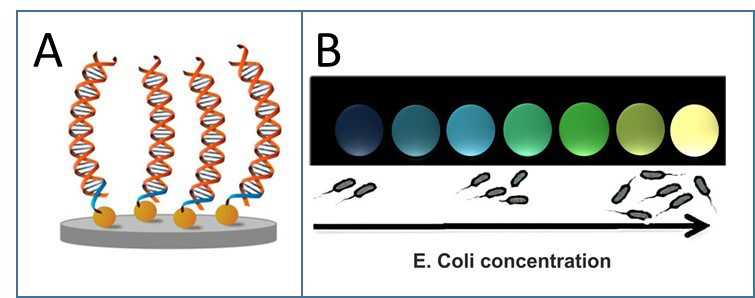There is an urgent need for the development of cost-efficient devices for in-field detection of pathogens. Nanobiosensors are a very good alternative for such applications. The first example is an integrated label-free in situ isothermal amplification/detection based on the use of screen-printed electrodes modified with gold nanoparticles and employing impedance for diagnostic of a plant disease (Citrus tristeza virus, CTV). The developed in-situ isothermal amplification/detection sensor showed advantages in terms of simplicity, sensitivity, and portability together with allowing quantitative analysis of nucleic acid. The proposed biosensor is of high potential interest for in-field applications for plant pathogen early detection, which would overcome the limitations of classical molecular methods such as PCR (polymerase chain reaction). The second example includes a fast and reliable way to detect pathogenic bacteria. The developed assay is based on the conversion of an electrochemical signal into a more convenient optical readout for the visual detection of Escherichia coli (E.coli). By electropolymerizing polyaniline (PANI) on an indium tin oxide screenprinted electrode (ITO SPE), we achieved not only the desired electrochromic behavior but also a convenient way to modify the electrode surface with antibodies (taking advantage of the many amine groups of PANI). Applying a constant potential to the PANI-modifed ITO SPE induces a change in their oxidation state, which in turn generates a color change on the electrode surface. The presence of E. coli on the electrode surface increases the resistance in the circuit afecting the PANI oxidation states, producing a different electrochromic response. Using this electrochromic sensor, we could measure concentrations of E. coli spanning 4 orders of magnitude with a limit of detection of 102 colony forming unit per 1 mL (CFU mL-1) by the naked eye and 101 CFU mL-1 using ImageJ software. In this work we show that merging the sensitivity of electrochemistry with the userfriendliness of an optical readout can generate a new and powerful class of biosensors, with potentially unlimited applications in a variety of fields.
Reference
